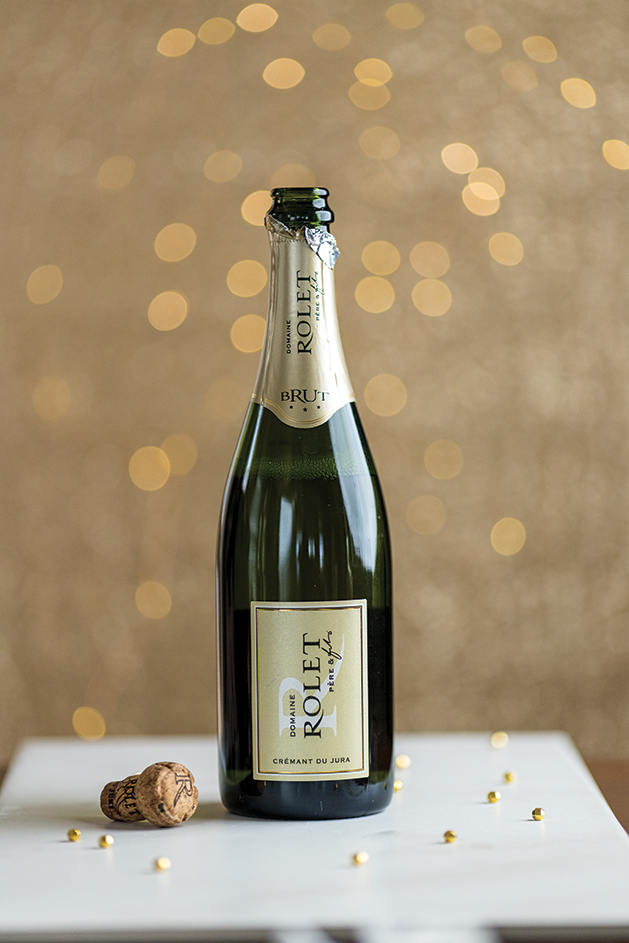
Popping the cork on a bottle of bubbly can fill a room with celebratory spirits. As we move into brunch season and springtime celebrations, let’s take a closer look at a Champagne’s lesser-known cousin.
With the same richness and body of Champagne, crémant (pronounced kruh-maant) brings the same life and effervescence as its counterpart—at a fraction of the price. We spoke with Mike Scharff of Haskell’s The Wine People to learn more about this sparkling sensation.

What is crémant?
Crémant in the most basic of explanations is sparkling French or, more uncommonly, Luxembourg, wine that is produced outside of the Champagne region. These wines are similarly made and of similar quality but at a much more affordable price than we typically find with Champagnes.
What’s the production process?
The production process term that is shared with Champagne is méthode traditionnelle. This is where secondary fermentation occurs inside the bottle instead of a vat or tank. This is said to give the sparkling wine more texture and nuance that we have come to expect from both Champagne or crémant. This creamy mouth texture is how crémant got its name, which literally translates to “creamy.”
Where is crémant made?
Crémant is produced throughout France in eight designated regions: Alsace, Bordeaux, Bourgogne, Die, Jura, Limoux, Loire and Savoie. The most commonly found regions here on our shelves would be Alsace, Bourgogne or Loire. Little discussed is the one crémant found outside of France in the area of Luxembourg’s Moselle district. Crémant de Luxembourg is also made méthode traditionnelle like France’s counterparts and is considered true crémant.
Does crémant run sweet or dry?
When it comes to sweet or dry, most often crémant comes in brut dryness like most Champagne offerings. However, like Champagne, the crémant can vary in sweetness with extra brut (very dry—super uncommon), brut (dry), to a demi sec (slightly sweet or “off-dry”).
How does crémant differ from Champagne?
We can certainly get into details like atmospheric pressures and dosage requirements, but what truly sets crémant apart from Champagne is the use of more regionally found grape varietals in addition to chardonnay, pinot noir and pinot meunier, which we commonly see in Champagne. We’re talking grapes that many have never even heard of like auxerrois, clairette, mauzac or savagnin, for example. It is because of the wide range of grape varietals that we have these distinct and defined regions throughout France, which can vary from producer to producer.
Also, the aging on lees, the dead yeast known to provide the bready bouquet on the nose, is a minimum of nine months for crémant, while 12 [months] for Champagne.
How does crémant compare to prosecco?
The methode traditionnelle process is also what separates itself from the Italian sparkling wine prosecco as its secondary fermentation is vatted not bottled. Prosecco also uses the glera grape almost exclusively.
Does crémant have the ability to age?
Champagne is renowned for its ability to age gracefully, while most crémants tend to drink better younger.
What is the optimal temperature for crémant?
Crémant’s optimal chilled temperature for consumption is generally agreed to be between 47 to 50 degrees F. Two to three hours in the refrigerator will usually do the trick.
How about food pairings?
Crémant, like so many other sparkling wines, is such a versatile food wine. Almost anything fruity, oily, fatty or salty is a wonderful compliment. We’re talking meats, fish and other goodies from the sea, salads and fried foods. Fruity or sweet desserts paired with a demi-sec crémant are also a good choice. This is a testament that sparkling wines like crémant are not and should not be exclusively enjoyed on celebratory occasions but any occasion that good wine is called for.
Why isn’t crémant as well known?
I think the average consumer is more educated and is becoming increasingly aware of this sparkling gem. Crémant has been asked for by name more and more in our stores each day. Pricing starts mid-teens and up.
A few of your favorite crémants?
I have several crémants on the shelves, but a couple of my absolute favorites are crémant de Bourgogne from Louis Bouillot. Bouillot comes in brut blanc or brut rosé. This has a bit more pinot noir in the mix.
Haskell’s The Wine People, 6445 Lake Road #200
haskells.com
Haskell’s






















